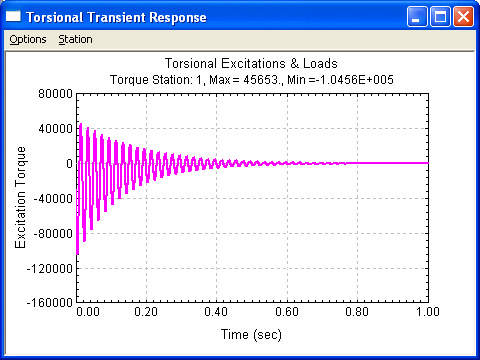
Torsional Transient Response – Time Dependent Excitations
For torsional transient analysis, DyRoBeS allows two types of excitations. One is the time dependent excitation, such as short circuit torque, and the other is the speed dependent excitation, such as synchronous motor startup. For time dependent excitation, the excitation input can be either in the equation format or from a data file. For more information on the time dependent inputs, click Torsional Excitations in Equations and Torsional Excitations in Data Files. For speed dependent excitation, the driving and load torques are entered in Torsional Driving Torque and Load Torque.
Consider a 4200 kW, 50 Hz, 4 Poles motor with a 3-phase fault, the short circuit excitation torque is shown below:
Torsional Short Circuit Applied Torque
This option displays the torsional short circuit torque vs. time. Note that in a typical torsional short circuit excitation, there is a large initial transient that dies out exponentially.

FFT of the excitation, it shows that the excitation is mainly the 50 Hz line frequency.
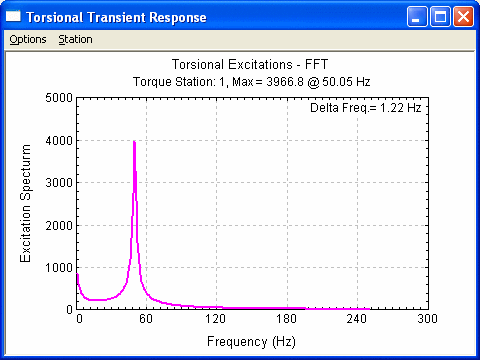
Torsional Short Circuit Transient Element Deflection

FFT of the response, it shows that the response has two major frequency components. One is 11 Hz, which is the system natural frequency and is excited by the initial conditions. The other one is 50 Hz which is the excitation frequency caused by the short circuit.
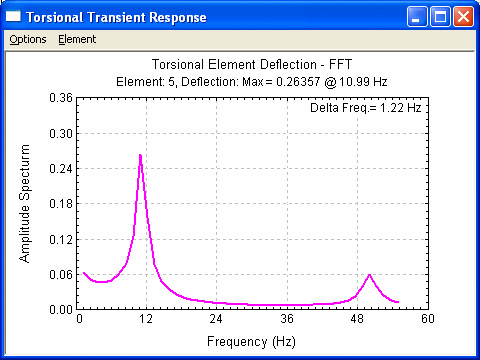
The mode shapes for the first three natural modes are shown below:
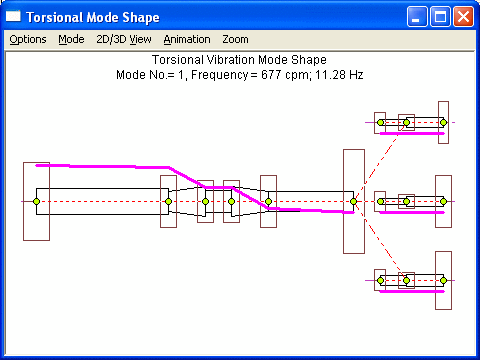
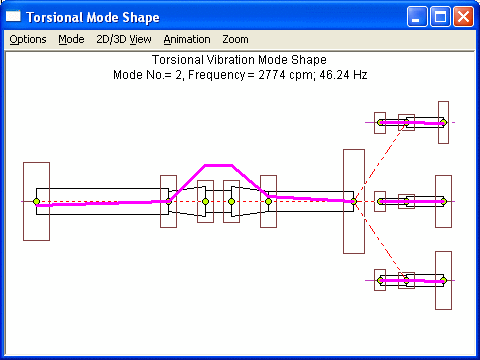
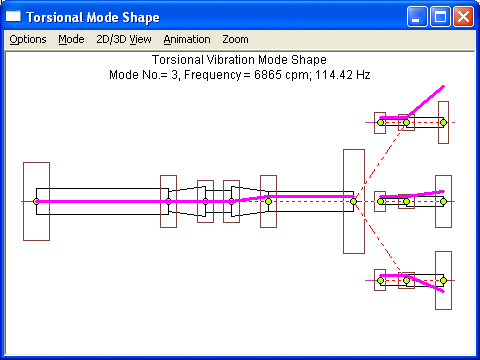
Torsional Short Circuit Transient Element Vibratory Torque
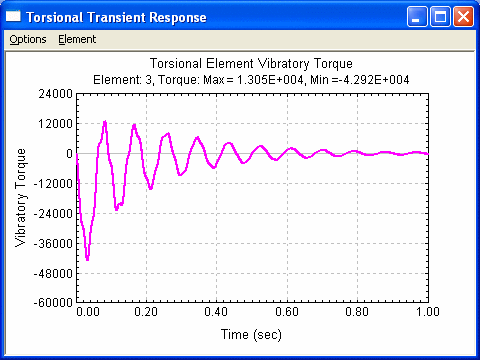
Torsional Short Circuit Transient Element Vibratory Stress
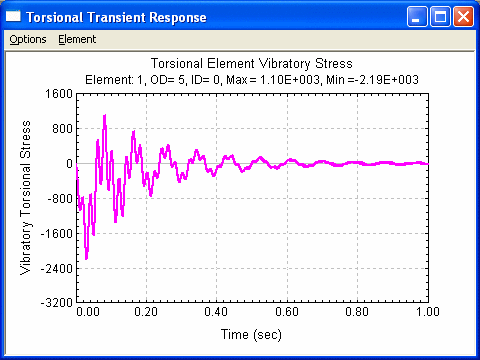
See also Torsional Vibration Analysis, Transient Analysis (Time Dependent Excitations).
Copyright © 2014-2017